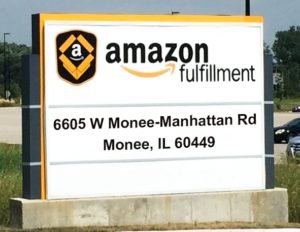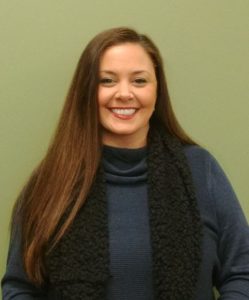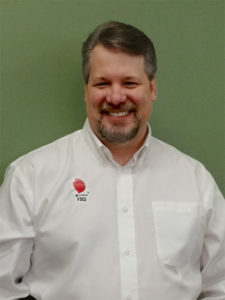President’s Message
An FSCI update from Keith S. Frangiamore, President
More great changes and improvements at Fire Safety Consultants, Inc.
Recently, FSCI hired two new consultants in the Illinois office to augment our fire protection plan review staff. Michael Carnduff and Suzie Gardner joined our Illinois office team and have already begun intensive training. This was an exhaustive search and interview process and we are confident that we have found two highly motivated people to fill our team in the Illinois office. Both bring exceptional technical knowledge and excellent customer service skills. We are very excited to have both Mike and Suzie join the FSCI team, and we look forward to adding more great people in 2018!
The FSCI team continues to provide numerous 3rd party plan reviews for our clients, educational seminars, and complete consulting services for many large projects. Since our last newsletter, FSCI Vice President Warren Olsen spent a week in Tokyo, Japan presenting fire alarm code training. Plus, Matt Davis & Brent Gooden each provided a two-day training session for the City of Milwaukee. We also worked on large projects in Canada, Florida, Illinois, New York, Texas, Missouri, Wisconsin and Nebraska.
In early December, we hosted the FSCI quarterly field services meeting. We were pleased to host nearly all of our consultants in both the Illinois and Michigan offices. The field services, four-hour quarterly meeting included high level inspection training, client and customer service training, and operational efficiency training which included our fire protection plan reviewers.
Looking ahead in 2018, our team’s priority is creating a “FSCI electronic plan review system”. This new electronic plan review process will allow us to reduce the time it takes to move paper plans between FSCI, and our clients and customers. We also look forward to other service improvements, including website access to the national FSCI Fee Schedule and online credit card payments.
Can We Inspect a Building with 2.3 Million sq.ft. of Office Space?
In January of 2018, I will have been with FSCI for 10 years. During that time, I have seen our company expand the quality services we offer and increase our client base throughout the United States. Each new year brings exciting challenges that all of our dedicated employees meet head on to ensure our company goal of providing the highest quality of services possible. FSCI would not be the company it is today without all of our hard working and experienced employees. This was evident on a very large project that FSCI completed in 2017. Large projects require a group of employees, contractors, code officials, and owners’ representatives working together to make sure everyone wins with a code compliant building.
At the end of 2016, FSCI was tasked with conducting plan review and inspection services for Amazon, one of the largest internet retailers in the world. The project was a large distribution facility that Amazon calls a  Fulfillment Center. They have several of these distribution centers in Illinois and throughout the United States. The facility was approximately 2.3 million sq. ft. of floor area encompassing distribution, high piled storage and office uses.
Fulfillment Center. They have several of these distribution centers in Illinois and throughout the United States. The facility was approximately 2.3 million sq. ft. of floor area encompassing distribution, high piled storage and office uses.
Multiple FSCI team members worked on the sprinkler plan review, performed quality checks and answered numerous questions about the project. Close to 40,000 sprinklers, multiple standpipe systems, and hose connections were reviewed by FSCI. The system included 45 system risers fed from an underground private fire loop around the building that was pressurized by a 2,000 gpm fire booster pump driven by a diesel engine. A mixture of early suppression fast response, large orifice and quick response sprinklers were used. FSCI’s responsibilities included reviewing the equipment, system designs and layout of the systems to ensure that they were in compliance with the International Building and Fire Codes and applicable NFPA standard requirements. The plan review process included constant communication with all of the stakeholders involved in the project to make sure that things such as the fire department connection and hose valve locations were in accordance with the fire code official’s approval. Further documentation was required to determine that the sprinkler densities used were appropriate for the various storage arrangements. Fire testing was performed in 2014 by a nationally recognized testing laboratory to determine the commodity classification for Amazon’s synthetic fabric KIVA pods. These pods are used to store the products we all buy through the internet.
While an emergency voice alarm communication system was not required by the local jurisdiction, a fire alarm system was being provided for this facility which also required a group effort during this plan review process. The system included approximately 1,000 notification appliances and many manual fire alarm boxes, smoke detectors, duct detectors and sprinkler system monitoring. The system was powered by one fire alarm control unit located in the fire pump room and approximately 60 remote power supplies located throughout the facility. Reviews were conducted to ensure that the notification appliances could be seen and heard in all areas required by the fire alarm and accessibility codes. Additional reviews of the system were needed to make sure system monitoring was provided which met the newest requirements of NFPA 72.
The acceptance testing of these systems took place over many months with many FSCI team members spending more than 24 days on site inspecting the various systems. This required an organized effort to make sure that we checked all areas and performed the required testing for all equipment. A meeting of all stakeholders was conducted early in the process to make sure all parties would be on the same page and contractors were made aware of the necessary tests that would need to be conducted. One way our inspectors kept track of previously conducted inspections was to mark up the approved plans on site after the completion of each inspection. This enabled us and the contractors to identify the locations of required corrections and verify the repairs had been completed.
In addition, access to certain areas of the building was difficult and at times restricted. A coordinated effort between the contractors and inspectors was necessary to gain access to those areas in order to meet deadlines. Many times, the restricted areas involved robotic testing. This Amazon location, like other locations, utilizes an automated storage and retrieval system to pick out orders. Our inspectors worked with the robotics company and other contractors to make sure that all areas of the building were inspected.
In total, over 200 hours of inspections were necessary by ten FSCI inspectors to accomplish the objective of meeting the acceptance testing requirements of several NFPA codes and standards. Detailed inspection reports were necessary to make sure all FSCI inspectors were on the same page and performed consistent testing on all equipment. Contractors from different trades were necessary for integrated system testing. Interfaced systems included sprinkler, fire pump, fire alarm, HVAC, and electrical systems. FSCI utilized spreadsheets to track the testing completed and areas that remained.
Sprinkler system inspections included the visual checks of all equipment including sprinklers, hangers, piping, fittings, valves, etc. Testing included all sprinkler and hose valve system piping and risers, two fire pump acceptance tests, hose valve flow tests, main drain tests, inspector test connections and valve supervision. Our thorough inspection process identified many light fixtures that created obstructions and required relocation.
Multiple visits to the facility were necessary to verify visual notification candela settings were correct and that audible levels produced by horn notification appliances were clearly heard throughout the building. Chapter 18 of NFPA 72, requires that the audible notification produce a sound level at least 15 decibels above the average ambient sound level or 5 decibels above the maximum sound level having a duration of at least 60 seconds, whichever is greater.
All projects, but especially projects of this size, require many different people working together to make sure that at the end of the project the occupants and first responders have a safe building. Working at FSCI I have seen the importance of this collective group effort to accomplish the plan review and inspection goals of a project. As a company, we have taken the approach of working with contractors to resolve issues found during plan review and inspections so that we can meet the goals in a timely manner. We accomplish this through an open line of communication with all stakeholders, good organization and by providing specific code sections to help explain the code and standard requirements.
Brent Gooden – Fire Protection Consultant
Employee Spotlight
Karina King
Karina joins us all the way from Woodland Hills, CA. She started with FSCI this past August as an Administrative Assistant and many of you  probably recognize her name from receiving plan review letters from her. Back in California, Karina worked as an Administrative Assistant in a personal injury law office where she learned many different aspects of the Administrative field. Karina attributes learning how to multi-task and being able to handle whatever responsibilities are tossed her way at FSCI from working at the law firm.
probably recognize her name from receiving plan review letters from her. Back in California, Karina worked as an Administrative Assistant in a personal injury law office where she learned many different aspects of the Administrative field. Karina attributes learning how to multi-task and being able to handle whatever responsibilities are tossed her way at FSCI from working at the law firm.
When free time allows her to, Karina enjoys beading, painting and cooking delicious meals. She moved here to the Midwest with her husband Dustin, their dog Fonzie and their cat Felix. So far they are enjoying relocating to IL…we will be sure to circle back with Karina in February to see if she still feels that way after her 1st Chicago winter!
Matt Davis
Although we have recently spotlighted many employees that have moved to IL from other states, Matt, whose real name is Robert Matthew, is a native of the Midwest and has lived in Illinois his entire life. Another fun fact is that Matt also holds the record for being the longest standing FSCI employee in the history of the company. His record, as this article is being written, stands at 20 Years, 5 Months, and 19 Days!
Matt holds a degree in Computer Aided Design and came to FSCI from W-T Engineering where he worked as an Electrical Engineer designing electrical and fire alarm systems for 7 years prior to joining our team. Matt started as a Fire Protection Consultant and has worked his way up to Senior Fire Protection Consultant working on not only larger plan reviews, but also handling complex inspections, code interpretation questions from clients, distribution of projects to the plan review staff and training new plan reviewers.
With Matt’s free time, he enjoys spending time with his wife of 12 ½ years and also watching his 2 sons and his daughter take part in the many things they enjoy, such as baseball and gymnastics. He also loves woodworking, stained glass projects, model building and quoting crazy movies like Airplane, Naked Gun and Vacation! Matt challenges anyone to email him if you know who said this and in what movie…”I’m 5’8”, 123 lbs. I have, uh, brown hair, blue eyes. I enjoy surfing, backgammon and men who aren’t afraid to cry”.
Little Known Facts
IBC 2015 – Sprinkler Systems, Assembly Occupancies on Roofs
In Section 903.2.1.6, an automatic sprinkler system is now required to be installed in all buildings (except open parking garages of Type I or II construction) when the roof is used for a Group A-2 occupancy with an occupant load exceeding 100, or when any other Group A occupancy exists where the occupant load exceeds 300.
It is very popular these days to find roof top spaces being utilized as assembly occupancies and other uses. Open air bars, lounges, or restaurants, are often found on the top of buildings which are actually outside of the fire area of a building.
A roof does not meet the definition of a fire area and, as such, is not required to be sprinklered. That being said, if a fire were to occur within the building itself, it could put the roof-top occupants at some level of risk. Protection of the building below the roof-top, down to the level of exit discharge, must be commensurate with the type of assembly occupancy located on the roof. The code allows either an NFPA 13, or a NFPA 13R sprinkler system within the limits placed on this type of system, to be used within the building below the roof-top occupancy.
Totie Leonardo – Senior Building & Life Safety Consultant
NFPA 13 – 2016 Edition, Open Grate Floors
When you have been working in this industry for a long time, you often question yourself about what you think is in a code or standard and what is really in the document. As an example, most of us think that sprinklers are required under open grate floors if they are over 4 feet in width (aren’t they?). This has been in the obstructions section of NFPA 13 for at least a few code cycles. When questioned about this requirement you break out your 2016 edition to look up the code section and you cannot find it. Did NFPA remove it, or is it no longer required?
No need to fear, this requirement was not removed from the standard, just the first printing of the book. NFPA released a TIA (Tentative Interim Amendment) #1225 in July of 2016 announcing that the section addressing open grate floors was mistakenly left out when 8.5.5.3.1 was re-numbered for the 2016 edition. “This deletion was inadvertent. None of the public inputs and none of the discussions at the Technical Committee meetings suggested that the text should be deleted. It should therefore be added back in.” Although it may not be in your copy of the standard, sprinklers are still required under open floor grating, just as it always has been.
Matt Davis, Senior Fire Protection Consultant
NFPA 72 – 2016 Edition – National Fire Alarm & Signaling Code, 1.4 Retroactivity
NFPA 72, similar to most other NFPA codes and standards, provides a section on retroactivity. Unless otherwise noted within the code, the provisions found in the applicable edition of NFPA 72 being used in a jurisdiction do not apply to facilities, equipment, structures or installations that were existing or approved for construction or installation prior to the effective date of the document. An exception to this provision is found in 1.4.2 which states that there may be cases, in the eyes of an AHJ, where an existing situation involves a distinct hazard to life or property. In these cases, such as a constantly inoperative fire alarm system or one that is constantly generating nuisance alarms which can’t be corrected, retroactive application of the code can be permitted. Simply making a minor repair to a normally operating fire alarm system component is not grounds for requiring an entire fire alarm system to be replaced. Please remember though, that there is a chapter in the code that applies to all systems. Chapter 14, Inspection, Testing, and Maintenance, Section 14.1.4, states “The requirements of this chapter shall apply to both new and existing systems.” This section makes it clear that all fire alarm systems, whether required or not, must receive inspection, testing, and maintenance which includes the correction of system deficiencies.
Warren Olsen, VP Building & Life Safety, Chairperson, NFPA 72 – Chapter 26
Seminars
Stay up to date on the latest Fire, Building and Life Safety code changes and equipment by attending one of our seminars. FSCI is teaching seminars throughout the United States, led by our experienced staff of Matt Davis, Keith Frangiamore, Brent Gooden, George Michehl & Warren Olsen. Whether you are a Contractor, Architect, Technician, Engineer or an Authority Having Jurisdiction, each seminar is full of practical insights and first-hand experiences to help you comply with applicable codes and standards. FSCI can also provide custom seminars at your location. Be sure to check out our schedule of upcoming seminars on our website. Contact us to learn more by emailing [email protected] or by calling our office at (847) 697-1300.
